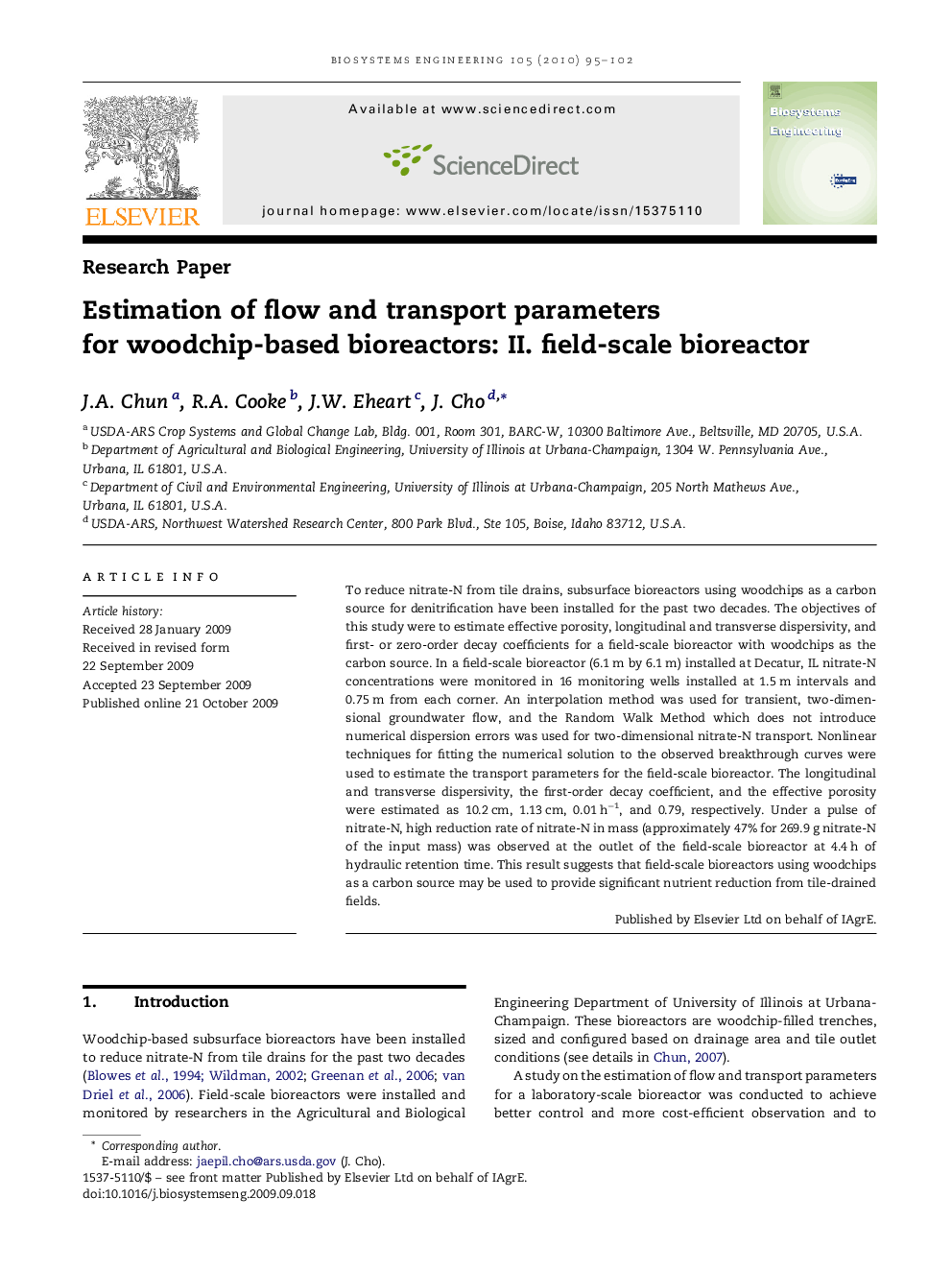| Article ID | Journal | Published Year | Pages | File Type |
|---|---|---|---|---|
| 1712051 | Biosystems Engineering | 2010 | 8 Pages |
To reduce nitrate-N from tile drains, subsurface bioreactors using woodchips as a carbon source for denitrification have been installed for the past two decades. The objectives of this study were to estimate effective porosity, longitudinal and transverse dispersivity, and first- or zero-order decay coefficients for a field-scale bioreactor with woodchips as the carbon source. In a field-scale bioreactor (6.1 m by 6.1 m) installed at Decatur, IL nitrate-N concentrations were monitored in 16 monitoring wells installed at 1.5 m intervals and 0.75 m from each corner. An interpolation method was used for transient, two-dimensional groundwater flow, and the Random Walk Method which does not introduce numerical dispersion errors was used for two-dimensional nitrate-N transport. Nonlinear techniques for fitting the numerical solution to the observed breakthrough curves were used to estimate the transport parameters for the field-scale bioreactor. The longitudinal and transverse dispersivity, the first-order decay coefficient, and the effective porosity were estimated as 10.2 cm, 1.13 cm, 0.01 h−1, and 0.79, respectively. Under a pulse of nitrate-N, high reduction rate of nitrate-N in mass (approximately 47% for 269.9 g nitrate-N of the input mass) was observed at the outlet of the field-scale bioreactor at 4.4 h of hydraulic retention time. This result suggests that field-scale bioreactors using woodchips as a carbon source may be used to provide significant nutrient reduction from tile-drained fields.
